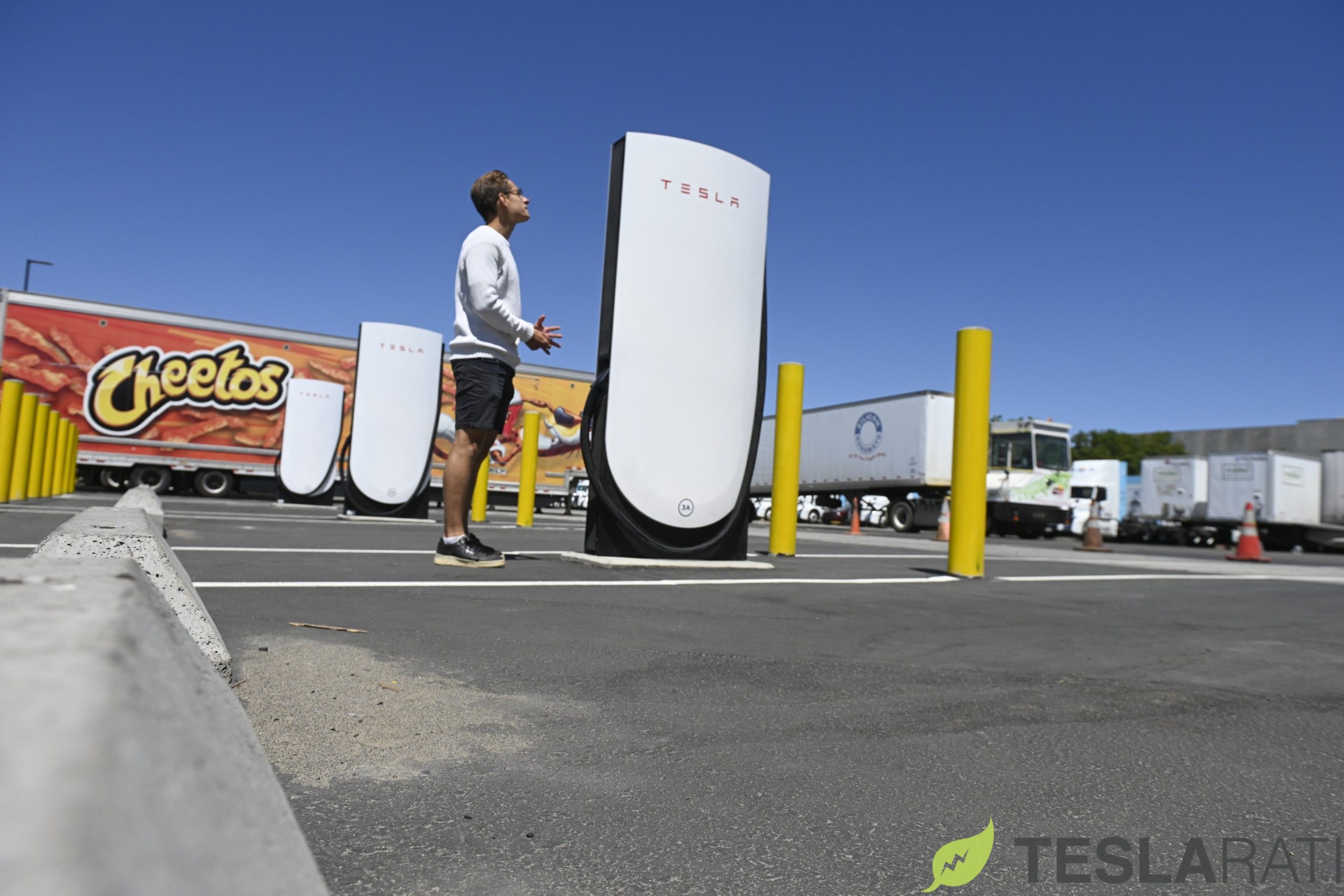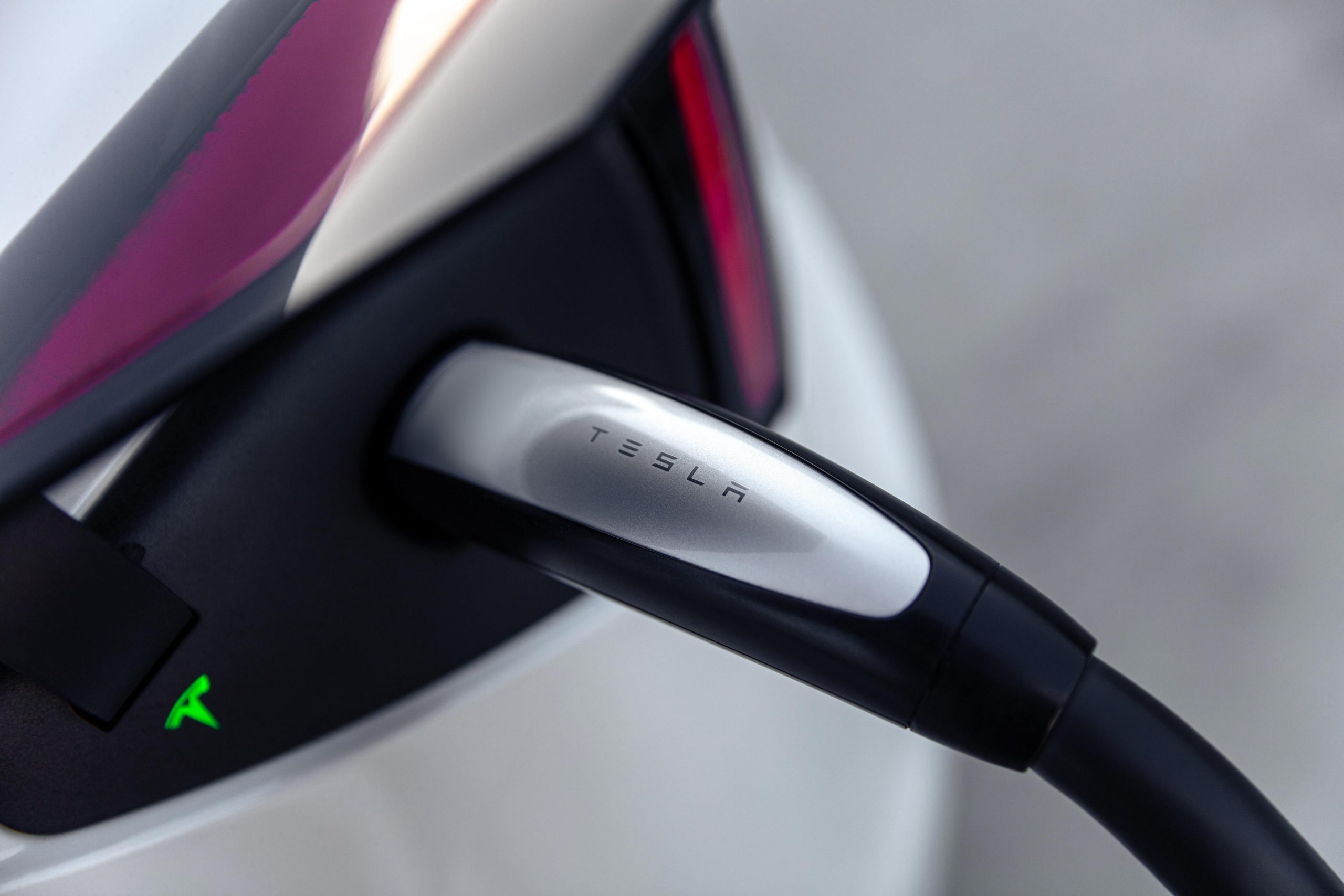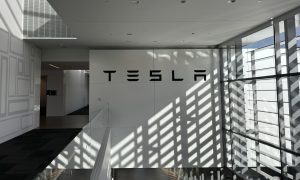Rumors about Tesla’s upcoming V4 Supercharger are swirling throughout the community, with various details about the new charging stacks being speculated against. Tesla Superchargers are the most populous on Earth and have also started to expand to other automakers in some regions, like Europe. However, the company is looking to bring out a new design and also a potential adoption of CCS support for non-Tesla owners.
Tesla’s current top-of-the-line Supercharger is the V3, which is capable of 250 kW charging speeds that can give owners 1,000 miles of range per hour. The introduction of the V3 Supercharger was during my first days as a journalist at Teslarati, and I remember it vividly. It was incredible to see such fast charging speeds and a controlled and calculated rollout of Tesla’s new tech. But of course, even new tech becomes outdated.
The new V4 Supercharger could have a completely updated design, according to @MarcoRPTesla, who stated that the new design will be taller, slimmer, and more streamlined than previous Supercharger shell designs.
As for the V4 design, it looks like Tesla will be using a different shell than the current V2 and V3 models.
While I have yet to determine the new shape, I was able to find the dimensions so that it can be compared to the current model. pic.twitter.com/QQhtDgHfCJ
— MarcoRP (@MarcoRPTesla) July 9, 2022
One could argue that the design of the upcoming V4 Superchargers are similar to the Megachargers Tesla will utilize for the Semi. Teslarati showed exclusive images of the Megacharger design at the Frito-Lay factory in Modesto in June, and it is similar to the drafts of the V4 Supercharger design.
Credit: Teslarati reader Timke Klinker
As you can see from these drafted designs, the new V4 Supercharger could be completely different in terms of dimensions and could be an advantage when used with Tesla’s upcoming Cybertruck as it is a larger vehicle.
The front page of a report also leaked from Tesla that showed the company is planning to develop a Supercharger Charge Post that has Dual Cables that are suitable for both V3 and V4 charging speeds and could also include a potential CCS charging port for third-party automakers to use.
Now, Tesla has discussed opening Superchargers to third-party companies for several years, and it’s already started in the form of a Pilot Program in Europe. The same type of program could be launched in the United States later this year, and it likely will start with the V4 Supercharger. After all, the White House said in late June:
“Later this year, Tesla will begin production of new Supercharger equipment that will enable non-Tesla EV drivers in North America to use Tesla Superchargers.”
V4 supercharger deployment starts this year, first locations will be in Austin, Texas. Higher max charge rate and voltage will be supported, as well as both CCS and Tesla cables @elonmusk $TSLA
— Whole Mars Catalog (@WholeMarsBlog) July 13, 2022
Earlier this week, automaker Aptera pleaded to Congress that Tesla’s Supercharger should be the standard in the United States. “While electric vehicle technology has rapidly advanced, the charging standard in the U.S. has not,” Aptera wrote in an email to Teslarati. “CCS and SAE J1772, the US’s common standards, are clunky, cumbersome, and expensive.”
Tesla’s non-Tesla Supercharger pilot program expands to France, Norway
It is unlikely that Tesla’s Supercharger design will be adopted as the Standard, but the inclusion of CCS-compatible charging connectors on upcoming Superchargers would be a huge advantage for e-mobility and the adoption of EVs as a whole.
I’d love to hear from you! If you have any comments, concerns, or questions, please email me at joey@teslarati.com. You can also reach me on Twitter @KlenderJoey, or if you have news tips, you can email us at tips@teslarati.com.
News
Tesla begins Robotaxi certification push in Arizona: report
Tesla seems serious about expanding its Robotaxi service to several states in the coming months.

Tesla has initiated discussions with Arizona transportation regulators to certify its driverless Robotaxi service in the state, as per a recent report from Bloomberg News. The move follows Tesla’s launch of its Robotaxi pilot program in Austin, Texas, as well as CEO Elon Musk’s recent comments about the service’s expansion in the Bay Area.
The Arizona Department of Transportation confirmed to Bloomberg that Tesla has reached out to begin the certification process for autonomous ride-sharing operations in the state. While details remain limited, the outreach suggests that Tesla is serious about expanding its driverless Robotaxi service to several territories in the coming months.
The Arizona development comes as Tesla prepares to expand its service area in Austin this weekend, as per CEO Elon Musk in a post on X. Musk also stated that Tesla is targeting the San Francisco Bay Area as its next major market, with a potential launch “in a month or two,” pending regulatory approvals.
Tesla first launched its autonomous ride-hailing program on June 22 in Austin with a small fleet of Model Y vehicles, accompanied by a Tesla employee in the passenger seat to monitor safety. While still classified as a test, Musk has said the program will expand to about 1,000 vehicles in the coming months. Tesla will later upgrade its Robotaxi fleet with the Cyercab, a two-seater that is designed without a steering wheel.
Sightings of Cybercab castings around the Giga Texas complex suggests that Tesla may be ramping the initial trial production of the self-driving two-seater. Tesla, for its part, has noted in the past that volume production of the Cybercab is expected to start sometime next year.
In California, Tesla has already applied for a transportation charter-party carrier permit from the state’s Public Utilities Commission. The company is reportedly taking a phased approach to operating in California, with the Robotaxi service starting with pre-arranged rides for employees in vehicles with safety drivers.
News
Tesla sets November 6 date for 2025 Annual Shareholder Meeting
The automaker announced the date on Thursday in a Form 8-K.

Tesla has scheduled its 2025 annual shareholder meeting for November 6, addressing investor concerns that the company was nearing a legal deadline to hold the event.
The automaker announced the date on Thursday in a Form 8-K submitted to the United States Securities and Exchange Commission (SEC). The company also listed a new proposal submission deadline of July 31 for items to be included in the proxy statement.
Tesla’s announcement followed calls from a group of 27 shareholders, including the leaders of large public pension funds, which urged Tesla’s board to formally set the meeting date, as noted in a report from The Wall Street Journal.
The group noted that under Texas law, where Tesla is now incorporated, companies must hold annual meetings within 13 months of the last one if requested by shareholders. Tesla’s previous annual shareholder meeting was held on June 13, 2024, which placed the July 13 deadline in focus.
Tesla originally stated in its 2024 annual report that it would file its proxy statement by the end of April. However, an amended filing on April 30 indicated that the Board of Directors had not yet finalized a meeting date, at least at the time.
The April filing also confirmed that Tesla’s board had formed a special committee to evaluate certain matters related to CEO Elon Musk’s compensation plan. Musk’s CEO performance award remains at the center of a lengthy legal dispute in Delaware, Tesla’s former state of incorporation.
Due to the aftermath of Musk’s legal dispute about his compensation plan in Delaware, he has not been paid for his work at Tesla for several years. Musk, for his part, has noted that he is more concerned about his voting stake in Tesla than his actual salary.
At last year’s annual meeting, TSLA shareholders voted to reapprove Elon Musk’s compensation plan and ratified Tesla’s decision to relocate its legal domicile from Delaware to Texas.
Elon Musk
Grok coming to Tesla vehicles next week “at the latest:” Elon Musk
Grok’s rollout to Tesla vehicles is expected to begin next week at the latest.

Elon Musk announced on Thursday that Grok, the large language model developed by his startup xAI, will soon be available in Tesla vehicles. Grok’s rollout to Tesla vehicles is expected to begin next week at the latest, further deepening the ties between the two Elon Musk-led companies.
Tesla–xAI synergy
Musk confirmed the news on X shortly after livestreaming the release of Grok 4, xAI’s latest large language model. “Grok is coming to Tesla vehicles very soon. Next week at the latest,” Musk wrote in a post on social media platform X.
During the livestream, Musk and several members of the xAI team highlighted several upgrades to Grok 4’s voice capabilities and performance metrics, positioning the LLM as competitive with top-tier models from OpenAI and Google.
The in-vehicle integration of Grok marks a new chapter in Tesla’s AI development. While Tesla has long relied on in-house systems for autonomous driving and energy optimization, Grok’s integration would introduce conversational AI directly into its vehicles’ user experience. This integration could potentially improve customer interaction inside Tesla vehicles.
xAI and Tesla’s collaborative footprint
Grok’s upcoming rollout to Tesla vehicles adds to a growing business relationship between Tesla and xAI. Earlier this year, Tesla disclosed that it generated $198.3 million in revenue from commercial, consulting, and support agreements with xAI, as noted in a report from Bloomberg News. A large portion of that amount, however, came from the sale of Megapack energy storage systems to the artificial intelligence startup.
In July 2023, Musk polled X users about whether Tesla should invest $5 billion in xAI. While no formal investment has been made so far, 68% of poll participants voted yes, and Musk has since stated that the idea would be discussed with Tesla’s board.
-

 Elon Musk1 week ago
Elon Musk1 week agoTesla investors will be shocked by Jim Cramer’s latest assessment
-

 Elon Musk20 hours ago
Elon Musk20 hours agoxAI launches Grok 4 with new $300/month SuperGrok Heavy subscription
-

 Elon Musk3 days ago
Elon Musk3 days agoElon Musk confirms Grok 4 launch on July 9 with livestream event
-

 News7 days ago
News7 days agoTesla Model 3 ranks as the safest new car in Europe for 2025, per Euro NCAP tests
-

 Elon Musk2 weeks ago
Elon Musk2 weeks agoA Tesla just delivered itself to a customer autonomously, Elon Musk confirms
-

 Elon Musk1 week ago
Elon Musk1 week agoxAI’s Memphis data center receives air permit despite community criticism
-

 Elon Musk2 weeks ago
Elon Musk2 weeks agoTesla’s Omead Afshar, known as Elon Musk’s right-hand man, leaves company: reports
-

 News2 weeks ago
News2 weeks agoXiaomi CEO congratulates Tesla on first FSD delivery: “We have to continue learning!”

















